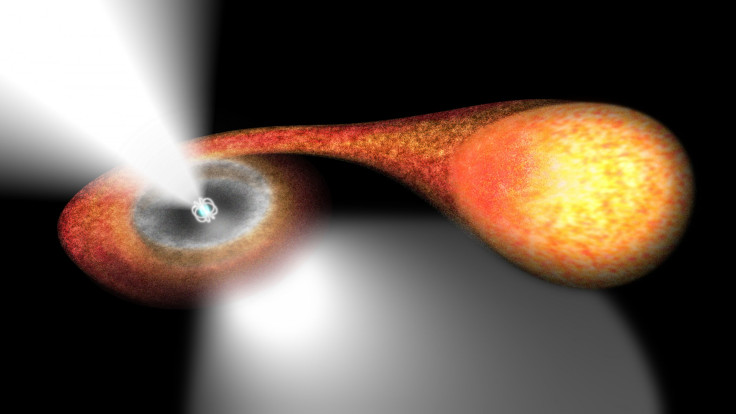Fast Spinning Neutron Star With ‘Dual Identity’ May Explain The Origin Of Mysterious Pulsars [VIDEO]

For the very first time, an international team of astronomers have discovered a “millisecond pulsar,” a fast-spinning neutron star, with a dual identity as it readily shifts back and forth between emitting pulses of X-rays and radio waves.
The astronomers spotted the pulsar named PSR J1824-2452I by using a number of orbiting X-ray telescopes, including NASA's Swift and Chandra X-ray Observatory. The discovery represents a long-sought intermediate phase in the life of these powerful objects and will help scientists observe pulsars’ intense magnetic field in action.
"With our discovery of a millisecond pulsar that, within only a few weeks, switched from being accretion-powered and X-ray bright to rotation-powered and bright in radio waves, the search is finally over," said Alessandro Papitto from the Institute of Space Sciences in Barcelona, Spain, who led the research published in the Sept. 26 issue of Nature.
According to scientists, what helps make the switch from X-rays to radio and back is the rise and fall of gas streaming onto the pulsar from a normal companion star.
"With its twofold behavior, this millisecond pulsar has a similar role to that of the platypus or the echidna in the animal world, which lay eggs but also produce milk to feed their offspring – a living evolutionary link between reptiles and mammals," Papitto said.
Pulsars are highly magnetized, spinning neutron stars left over from the dramatic supernova explosions of massive stars. A neutron star is so dense that a teaspoonful weighs as much as a mountain, according to scientists.
Primarily observed as pulsating sources of radio waves, pulsars sweep out pulses of electromagnetic radiation hundreds of times each second, like beams from a lighthouse -- an activity, which suggests that the spin period of neutron stars can be as short as a few milliseconds.
Millisecond pulsars combine incredible density and powerful magnetic fields with extreme rotation and the fastest one is known to whirl at 43,000 revolutions per minute.
The new findings come from the European Space Agency, or ESA's, two missions -- INTEGRAL and XMM-Newton -- probing the high-energy universe, which make them the ideal instruments to detect transient sources like the swinging pulsar in question.
“In spite of the long time required for this detection, we believe that pulsars in such binary systems are fairly common, so we're looking forward to finding more,” Norbert Schartel, XMM-Newton Project Scientist at ESA, said in a statement.
© Copyright IBTimes 2024. All rights reserved.












